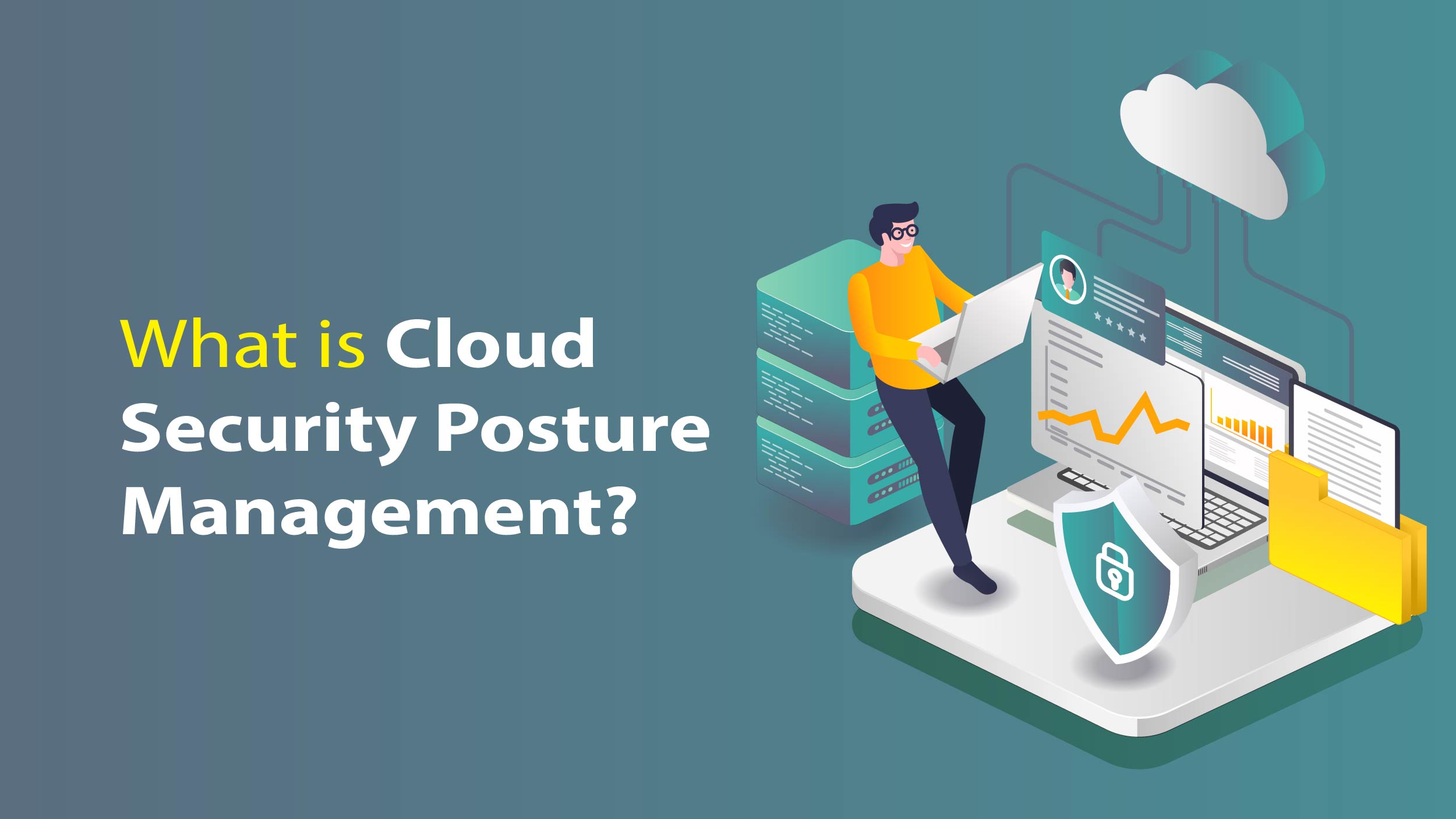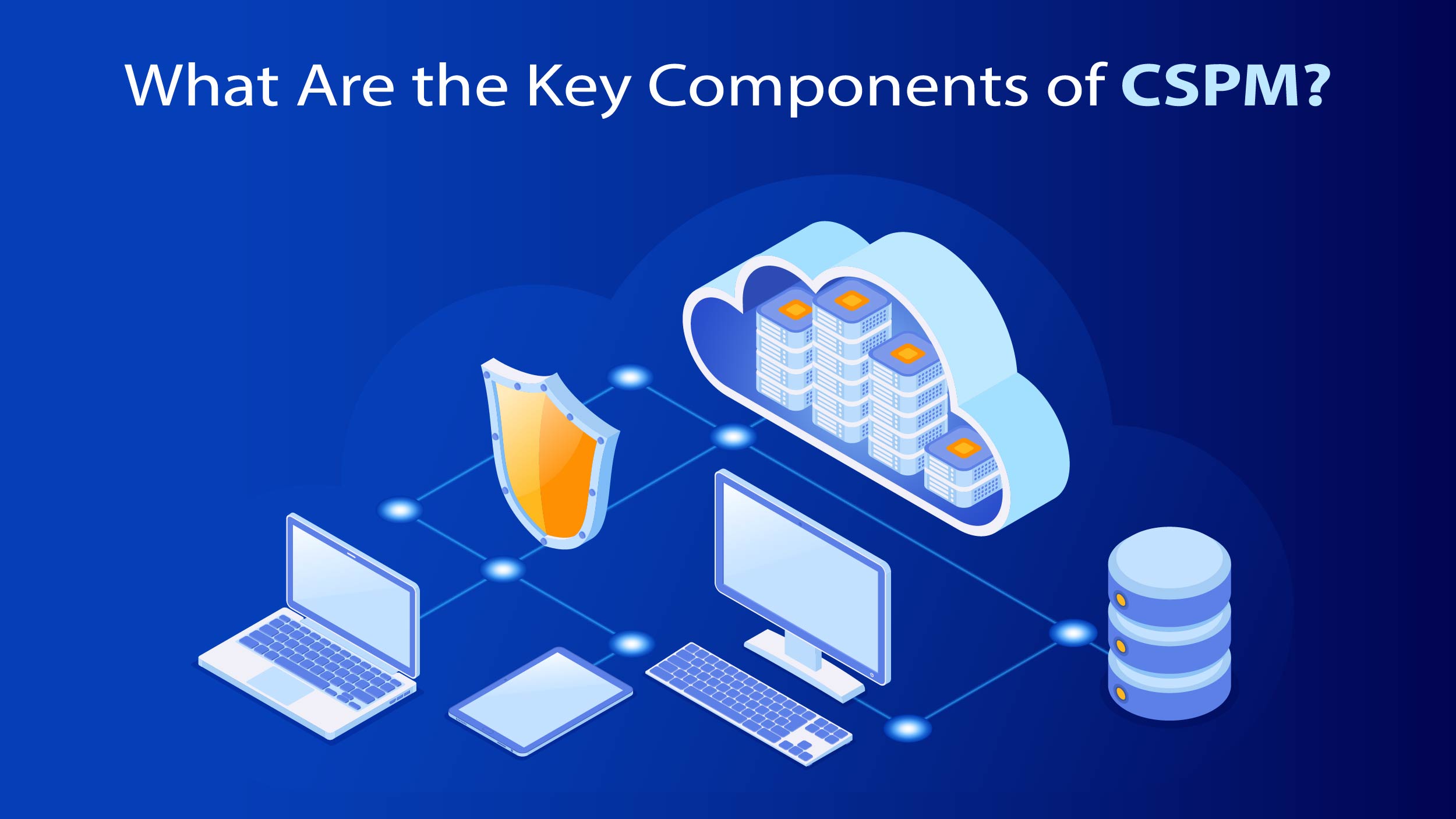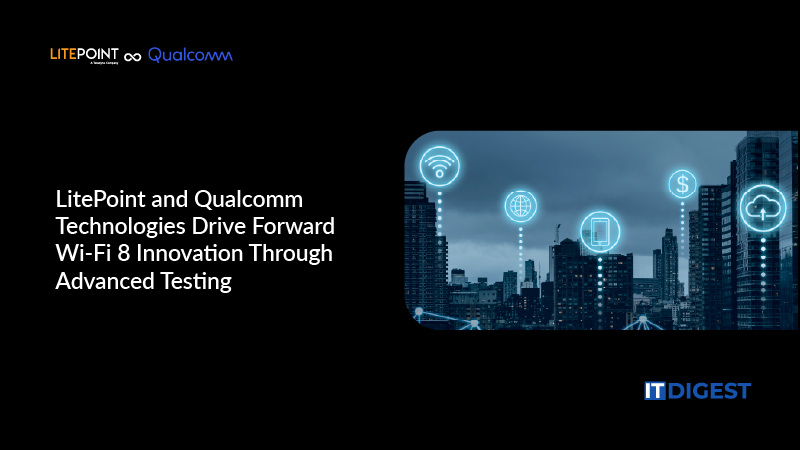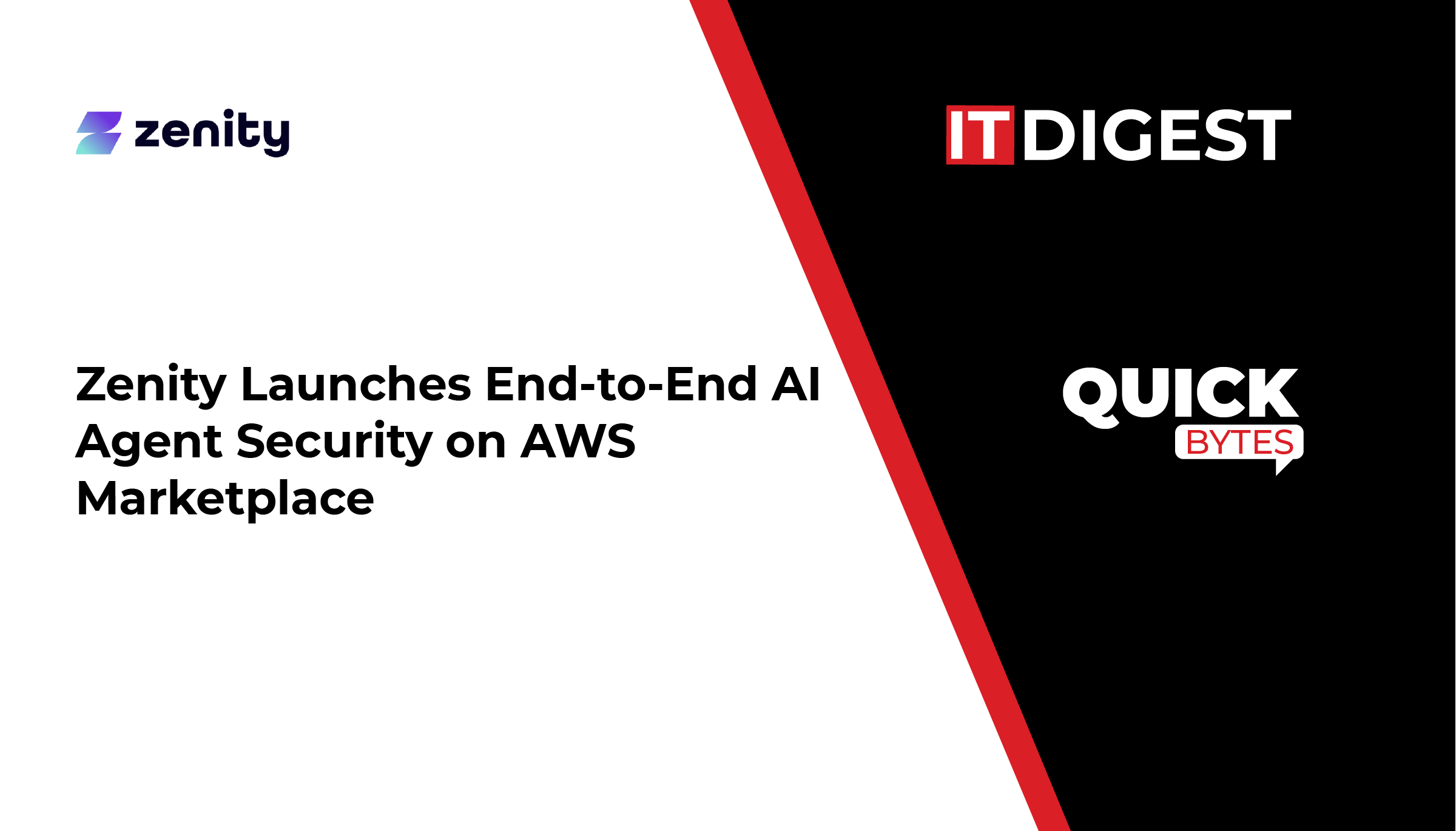In today’s rapidly evolving digital landscape, organizations face numerous challenges when it comes to maintaining the security and compliance of their cloud environments. Misconfigurations, unauthorized access, and emerging threats pose significant risks to sensitive data and can lead to devastating consequences. Data breaches cost an average of $165 per record (per capita). This pain point highlights the crucial need for a robust solution that can proactively address these security challenges. This is where cloud security posture management (CSPM) comes into play. This article delves into everything you need to know about it.
What is Cloud Security Posture Management?
 Cloud Security Posture Management (CSPM) refers to a category of IT security solutions dedicated to detecting misconfigurations and compliance vulnerabilities within cloud environments. CSPM tools play a critical role in continuously monitoring cloud infrastructure to ensure adherence to security policies.
Cloud Security Posture Management (CSPM) refers to a category of IT security solutions dedicated to detecting misconfigurations and compliance vulnerabilities within cloud environments. CSPM tools play a critical role in continuously monitoring cloud infrastructure to ensure adherence to security policies.
Initially coined by Gartner, CSPM encompasses security products aimed at automating security processes and guaranteeing compliance within cloud environments. These tools assess and compare cloud setups against established best practices and known security threats. They provide alerts to users regarding security risks and, in more advanced cases, leverage robotic process automation to rectify issues automatically.
Organizations embracing a cloud-first strategy often utilize CSPM to extend their security protocols to hybrid and multi-cloud environments. While commonly associated with Infrastructure as a Service (IaaS), CSPM solutions are also beneficial in mitigating configuration errors and compliance lapses in Software as a Service (SaaS) and Platform as a Service (PaaS) environments.
Also Read: What is IaaS Security? Best Practices & Challenges
Why is CSPM Important For Cloud Security?
Cloud Security Posture Management plays a critical role in maintaining robust cloud security and cloud risk management inherent in cloud environments. These specialized tools are instrumental in detecting and resolving issues stemming from cloud misconfigurations, thereby minimizing the potential for data breaches and compliance breaches.
Continuous monitoring and risk assessment
CSPM solutions operate by continuously monitoring cloud infrastructure, enabling organizations to promptly identify misconfigurations, evaluate associated risks, and gain insights into their overall security posture.
Securing Multi-Cloud and Hybrid Environments
CSPM tools are indispensable for securing cloud security management and complex cloud architectures, including multi-cloud, hybrid cloud, and containerized environments. They offer comprehensive visibility into cloud assets and enforce adherence to security policies and regulatory frameworks across diverse cloud platforms.
Proactive vulnerability management
One of the key advantages of CSPM lies in its proactive approach to identifying vulnerabilities and weaknesses in cloud configurations before they can be exploited. These tools automate the detection and remediation of misconfigurations across various cloud resources, such as Infrastructure as a Service (IaaS), Software as a Service (SaaS), and Platform as a Service (PaaS) platforms.
Enhanced incident response and compliance monitoring
CSPM facilitates efficient incident response and compliance monitoring by enabling security teams to monitor critical aspects of cloud security, including storage buckets, encryption settings, and account permissions. This helps organizations bolster regulatory compliance and swiftly respond to security incidents.
Centralized security management
Given the dynamic nature of cloud environments, CSPM serves as a centralized platform for IT teams and DevSecOps teams to manage and enforce security policies effectively. It provides a single source of truth, streamlining security operations and ensuring consistent adherence to security standards.
Cost optimization and operational efficiency
Additionally, CSPM tools contribute to cost optimization by identifying unused assets, streamlining security team workflows, and identifying opportunities for training. By automating security and compliance processes, these tools enhance operational efficiency, reduce manual effort, and ensure continuous protection of cloud environments.
How Does CSPM Work?
Cloud security posture management tools are created to identify and resolve problems arising from cloud misconfigurations. Each CSPM tool is tailored to follow established best practices corresponding to a particular cloud setting or service. Hence, understanding the suitable tool for each unique environment is crucial. Notably, certain tools are capable of pinpointing misconfigurations, specifically in AWS or Azure environments.
Certain CSPM (Cloud Security Posture Management) tools possess the capability to address problems automatically by integrating live, continuous monitoring with automation functionalities that are adept at identifying and rectifying issues like unauthorized account access. Furthermore, these tools can be programmed to ensure continual adherence to various compliance standards, such as HIPAA.
CSPM tools are capable of being utilized alongside a cloud access security broker (CASB), which is a software application or service designed to protect the transfer of information between an organization’s internal IT systems and a cloud service provider’s systems.
What Are the Key Components of CSPM?
 The components of cloud security posture management (CSPM) encompass several critical functionalities:
The components of cloud security posture management (CSPM) encompass several critical functionalities:
- Asset Discovery and Inventory: CSPM tools automatically identify and catalog cloud assets, ranging from virtual machines to storage, databases, and network configurations. This capability offers organizations visibility into their cloud resources and aids in the detection of misconfigurations.
- Risk Assessment and Compliance Monitoring: CSPM solutions evaluate cloud configurations against security best practices, regulatory compliance requirements, and industry frameworks. They help pinpoint vulnerabilities, assess associated risks, and ensure adherence to security policies.
- Continuous Monitoring and Alerting: CSPM tools continuously monitor cloud infrastructure for misconfigurations, unauthorized access attempts, and other security risks. Real-time alerts and notifications enable security teams to promptly respond to potential threats.
- Remediation and Auto-Remediation: CSPM solutions not only identify security issues but also provide actionable recommendations for remediation. Automated remediation capabilities empower organizations to swiftly address misconfigurations and enforce security best practices.
- Integration with DevOps: CSPM tools seamlessly integrate with DevOps processes, embedding security measures throughout the software development lifecycle. This integration ensures that security considerations are incorporated into the initial stages of application development and deployment.
- Risk Visualization and Reporting: CSPM solutions offer visualizations and reports that depict an organization’s security posture, highlight critical vulnerabilities, and track compliance status. These insights facilitate informed decision-making and support effective communication with stakeholders.
Key Capabilities of Cloud Security Posture Management
The majority of cloud security posture management tools for enterprises typically offer the capability to perform the following tasks:
- Identify and autonomously rectify misconfigurations in cloud settings.
- Keep a record of optimal methodologies for various cloud setups and services.
- Align the present configuration statuses with a security control framework or regulatory standard.
- Utilize Infrastructure as a Service (IaaS), Software as a Service (SaaS), and Platform as a Service (PaaS) within containerized setups, hybrid cloud architectures, and multi-cloud environments.
- Oversight of storage containers, encryption measures, and account authorization to identify misconfigurations and ensure compliance with regulations.
Benefits of Cloud Security Posture Management (CSPM)
Securing your organization’s workload begins with implementing robust security policies tailored to your needs, facilitated by a comprehensive CSPM solution. Here are four key benefits of CSPM:
Enhanced Control
CSPM empowers you to exert greater control over your cloud security policies, ensuring compliance with evolving regulations across your PaaS services and virtual machines. By applying policies uniformly across management groups, subscriptions, and your entire tenant, you maintain consistency and adherence to security standards.
Simplified management and connectivity
Deploying and configuring CSPM across expansive environments is made seamless with the integration of artificial intelligence (AI) and automation capabilities. This enables swift threat identification, facilitates the rapid expansion of threat investigation efforts, and automates the remediation process. Furthermore, integrating existing security tools into a centralized management system streamlines threat mitigation efforts.
Continuous monitoring and awareness
Your CSPM solution provides continuous monitoring of the security state of your cloud resources across various environments, including Azure, AWS, and Google Cloud. It automatically assesses assets spanning servers, containers, databases, and storage, enabling proactive identification of vulnerabilities and unauthorized access attempts. With comprehensive CSPM capabilities, you can closely monitor server workloads and implement tailored security measures.
Proactive assistance and recommendations
Gain valuable insights into your current security posture and receive recommendations for enhancing your defenses. Given the dynamic nature of legal and regulatory compliance requirements, a CSPM solution that monitors and applies updates automatically is invaluable. By analyzing the cloud environment comprehensively, CSPM tools identify risks and provide proactive recommendations, enabling security teams to reduce the attack surface and mitigate potential threats effectively.
Why Does Misconfiguration Occur Frequently?
Misconfigurations occur frequently and typically occur inadvertently. The programmable nature of public cloud infrastructure via APIs exacerbates the risk, as misconfigurations can potentially expose organizations to significant security vulnerabilities. These errors often result from the mismanagement of interconnected resources, such as Kubernetes clusters, serverless functions, and containers. This mismanagement is often attributed to a lack of visibility and understanding regarding the interactions between resources, leading to the improper application of permissions across various resources without considering the principle of least privilege.
Moreover, the complexity of modern enterprise environments further compounds the issue. With vast and intricate infrastructures comprising tens of thousands of resources and accounts, tracking and maintaining them becomes challenging. Developers may inadvertently configure permissions too liberally or lose oversight of critical assets within this complex environment, further increasing the likelihood of misconfigurations and security breaches.
End Note
Cloud Security Posture Management (CSPM) is a critical component of maintaining a secure and compliant cloud environment. By continuously monitoring and assessing the security posture of cloud resources, CSPM tools help organizations identify vulnerabilities, misconfigurations, and other security threats. They provide centralized visibility, automate best practice checks, and offer remediation recommendations for efficient risk mitigation. CSPM plays a vital role in ensuring the security and compliance of cloud infrastructure, allowing organizations to proactively protect sensitive data and respond promptly to emerging threats.
































